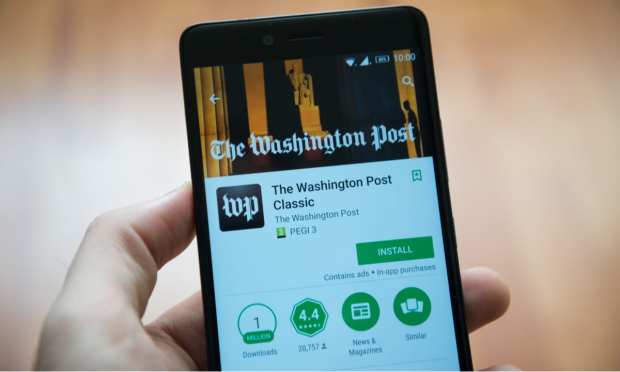Subscription Brands Grow By Cutting Frictions From Cross-Border Commerce

We know the pandemic is very bad. Life goes on regardless, and some businesses are actually doing okay in the year of COVID. Subscription brands, for example, are looking good.
“News publications are among those that have been enjoying robust international growth due in no small part to their digital subscription services,” according to PYMNTS’ latest Cross-Border Merchant Friction Index, done in partnership with FastSpring.
“The Washington Post has seen its global subscriptions increase by 60 percent since 2019, for example. A similar surge in new global digital subscriptions has propelled The New York Times to report its first financial quarter in which digital revenue exceeded that of print,” the report stated. “Bloomberg, The Wall Street Journal and The Atlantic also saw surges during the first few months following the World Health Organization’s (WHO’s) pandemic declaration, with new digital subscribers taking advantage of lowered paywalls and signing up from all around the globe.”
For all their current strength, however, subscription services struggle with lost customers and revenues from undue friction at several points in the onboarding and payments process.
It’s a series of delicate moments that require tact at scale. By benchmarking and measuring cross-border merchant frictions, they can be systematically removed for better outcomes.
Checking the Checkout
It’s all about the checkout. If we didn’t know that before, the new Cross-Border Merchant Friction Index clears up any lingering confusion as to the power of payments to seal deals.
“The 20 highest-scoring merchants offer the best checkout experiences in our study. These merchants have been able to enhance checkout by providing more site features than the others,” per the new Index. “Top 20 sites are more likely to provide nearly every type of checkout feature, from localized experiences to guarantee or refund policies to optional profiles and beyond. We found that every Top 20 merchant provides access to real-time help on their site, for example, while this feature is present in only 88 .2 percent of middle merchants and 40 percent of bottom 20 merchants — the group that earned the lowest scores. Top 20 merchants also support more language options and accept more payment methods.”
Adding in new features is proving out, as is removing features that don’t cut it with consumers.
“Our research shows that the top 20 merchants succeeded in improving their checkout, not by adding new features, but by removing the ones that negatively impact consumers’ experiences – specifically, the features of required profiles and marketing opt-ins,” the Index states.
“Sites that require customers to create profiles before making purchases push them into spending more time and effort than they like on the checkout experience, driving potential customers away. Top 20 merchants appear to understand this negative impact, as many have stopped requiring new customers to build profiles. Our research shows that 33.3 percent fewer top 20 sites require profiles in Q3 2020 than did so in Q1 2020.”
Mobile Optimization Makes the Grade
Mobile is a central role in merchants’ cross-border breakthroughs of late, increasing convenience, speed and security — three prerequisites for a winning mobile experience.
“Mobile optimization has played a major part in improving security and utility merchants’ checkout experiences,” per the Cross-Border Merchant Friction Index. “Many merchants in this sector have optimized their sites between Q1 2020 and Q3 2020, with 6 percent more security and utility merchants having mobile-optimized sites in Q3 2020. Mobile-optimized experiences make it easier for customers to shop and make purchases from their smartphones, facilitating smoother processes.”
As the new Index concludes, “Many site and checkout features are universally helpful to digital content vendors and can go a long way toward facilitating smoother, more user-friendly checkout experiences. These include product recommendations, allowing customers to rate and review their purchases. Features like these tend to be seen as marks of trustworthiness, and offering them can give consumers a confidence boost and inspire trust.”
